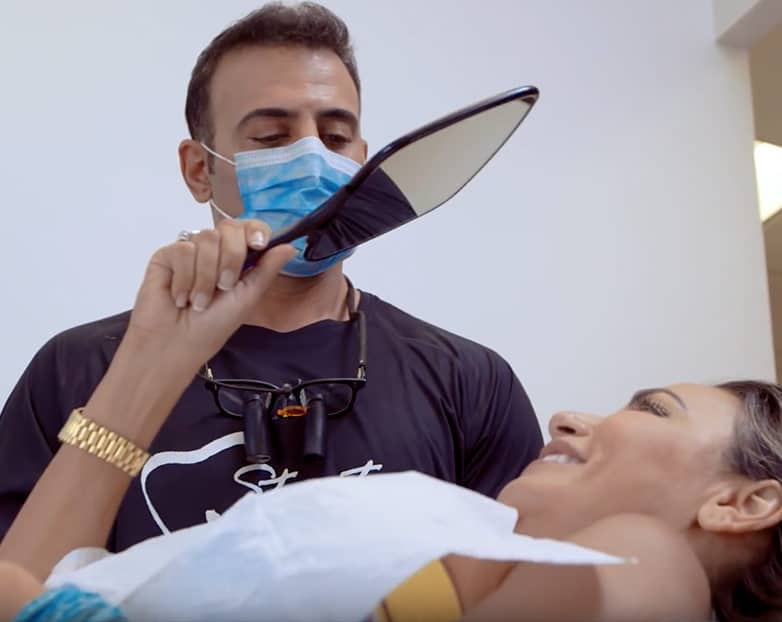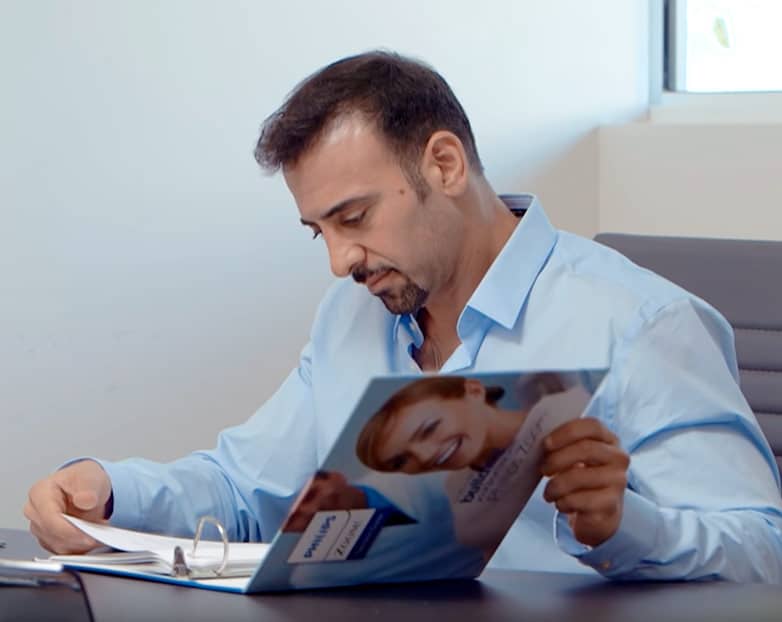Teeth whitening is something we know a lot about. Starting back in dental school, Dr. Stanton took an interest in whitening and was part of the largest study ever done on Crest Whitestrips in addition to other whitening systems. Several years ago, Philips Zoom, the #1 in-office whitening system in the world asked him to be the youngest member of their Research and Development Council and eventually made him their national spokesman. He has performed more in-office whitening procedures than any other solo practitioner in the country according to Philips.
UNDERSTANDING TEETH WHITENING
So how does whitening work? Lots of products claim to be able to "whiten". As stated above, staining can occur in two forms, external and internal. So if a toothpaste or rinse or other product contributes to the removal of extrinsic stain on the surface of the tooth, is it not technically performing whitening? The answer is yes, technically it is. However, that is not what most of us think of when we think of whitening. We think of the base shade and color of the teeth really changing to something whiter and brighter. This can only be done by removing the internal stain and this can only be done by removing the staining radicals embedded in the enamel and dentin and this obviously cannot be performed with any kind of brush, rinse or similar over-the-counter product. Different formulations of hydrogen and carbamide peroxide with other additives have been designed to break down into hydroxyl radicals that travel into teeth and remove stain radicals. These formulations come in different strengths.

Crest Whitestrips carry a very weak formulation. It must be a weak formulation because since the strips are not custom made, they will act on both gums and teeth equally. Gum tissue is irritated by peroxide and if the peroxide is strong enough the tissue can experience a chemical burn so that is why the concentration must be very limited. The other drawback of strips is that they whiten the tooth structure variably applying more gel to the flat parts of the teeth versus the curved parts of the teeth creating a "tan line" effect. Getting back to whitening, for more effective and efficient whitening stronger concentrations must be used. As the concentration rises though, the chance of side effects increases as well. Side effects include sensitivity and pain for a few days after the procedure. We, however, have created a regimen that eliminates this side effect. Whitening is a one-hour in-office procedure that consists of:
- Isolating the teeth and protecting the soft tissues
- Applying specially formulated gel which is accelerated by a blue LED in 3 fifteen minute sessions
- Special postoperative regimen
A CUSTOMIZED APPROACH SETS DR. STANTON APART
As previously stated, we are on the Research and Development Board of the #1 in-office whitening system and Dr. Stanton is the national spokesman for the company mainly because we have performed more procedures than any other solo doctor in the country. With all that experience, we have developed our own regimen and technique for getting the best possible results in the shortest amount of time with practically no chance of side effects.


